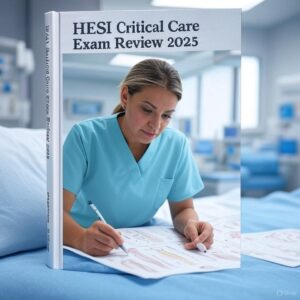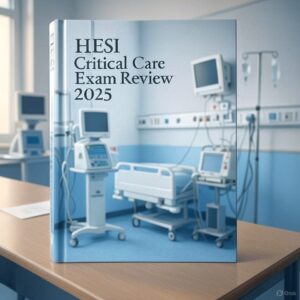-
Practice Questions: Targeted questions to test your critical care knowledge.
-
In-Depth Rationales: Detailed explanations to deepen your understanding of concepts.
-
Proven Strategies: Effective techniques to boost your exam performance.
-
Nursing Student Focused: Designed for success in the 2025 HESI Critical Care Exam.
-
Confidence-Building: Structured to ensure you’re fully prepared to pass.
Preview
2.A client is receiving atenolol (Tenormin) 25 mg PO after a myocardial infarction. The
nurse
determines the client’s apical pulse is 65 beats per minute. What action should the
nurse
implement
next?
A. Measure the blood pressure.
B. Reassess the apical pulse.
C. Notify the healthcare provider.
D. Administer the medication. – – correct ans- -Administer the medication
RATIONALE:
Atenolol, a beta-blocker, blocks the beta receptors of the sinoatrial node to reduce the
heart rate,
so the medication should be administered (C) because the client’s apical pulse is
greater than 60.
(A, B, and D) are not indicated at this time.
3.The nurse is assessing a client and identifies a bruit over the thyroid. This finding is
consistent
with which interpretation?
A. Hypothyroidism.
B. Thyroid cyst.
C. Thyroid cancer.
D. Hyperthyroidism – – correct ans- -Hyperthyroidism
Rationale:Hyperthyroidism (D) is an enlargement of the thyroid gland, often referred to
as a goiter, and a
bruit may be auscultated over the goiter due to an increase in glandular vascularity
which
increases as the thyroid gland becomes hyperactive. A bruit is not common with (A, B,
and C).












Reviews
There are no reviews yet.